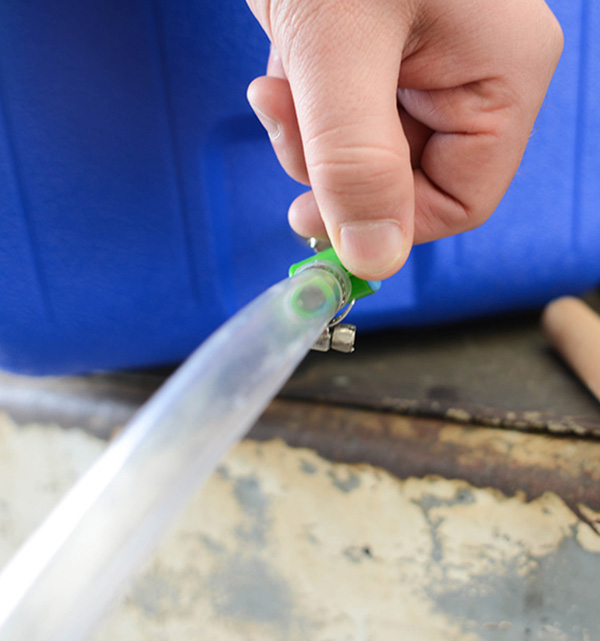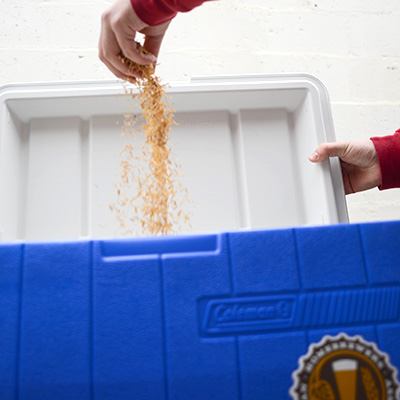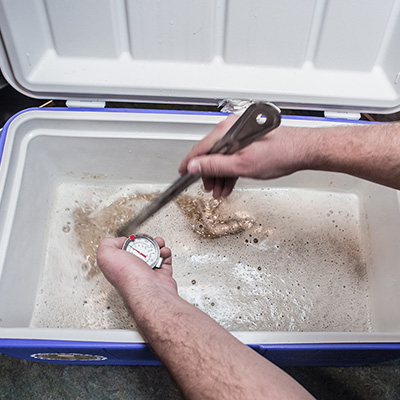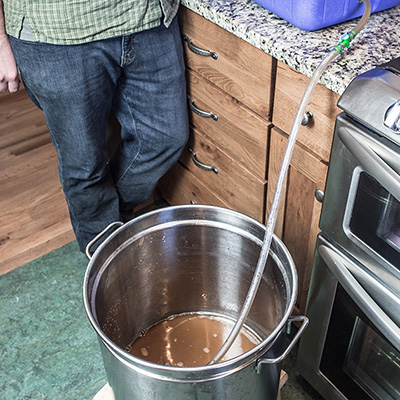 Who has time to putz around trying to fix a pesky stuck sparge? One of the best ways to deal with this issue is to prevent it from happening in the first place! Here are five tips to keep wort steadily flowing into your boil kettle.
Who has time to putz around trying to fix a pesky stuck sparge? One of the best ways to deal with this issue is to prevent it from happening in the first place! Here are five tips to keep wort steadily flowing into your boil kettle.
For more tips on preventing a stuck sparge, check out Randy Mosher’s article “10 Ways to Avoid a Stuck Sparge” featured in the March/April 2002 Zymurgy. Access this issue instantly with the eZymurgy online archive and Zymurgy mobile app!
1. Rice Hulls
 When brewing with adjuncts that tend to experience lots of gelatinization during the mash—wheat, oats and rye—rice hulls can be used as a filtering enhancer. The hulls do not effect the profile of the beer and are typically added at 0.5-2.0 pounds per five gallon batch.
When brewing with adjuncts that tend to experience lots of gelatinization during the mash—wheat, oats and rye—rice hulls can be used as a filtering enhancer. The hulls do not effect the profile of the beer and are typically added at 0.5-2.0 pounds per five gallon batch.
By adding the rice hulls to the mash, a grain bed that promotes better percolation of the liquid is created. This practice is similar to some traditional breweries that saved the husks after threshing wheat to throw into the mash for a better grain bed.
2. Grain Crush
It’s easy to under or over crush grains, especially if you don’t enjoy the luxury of owning your own mill. While grain crush can effect many aspects of brewing as well as the final beer, when over-crushed it can make for a gummy mash that doesn’t want to lauter, and if not crushed enough you run the risk of low extraction.
The ideal milling will result in the grain kernels being crushed while the husks are left in tact, which helps in the filtration process. While it can be a hassle, it may be ideal to adjust the mill for different grain types. At the very least, avoid crushing grains with mills that use slicing or sheering actions.
3. Keep Temperatures Warm
 When mash temperatures begin to drop below 145°F (63°C), the grains will start to gelatinize, causing the perfect storm for a stuck mash or sparge. Take measures to insulate your mash tun to keep temperatures up, such as simply wrapping a heavy blanket around the vessel.
When mash temperatures begin to drop below 145°F (63°C), the grains will start to gelatinize, causing the perfect storm for a stuck mash or sparge. Take measures to insulate your mash tun to keep temperatures up, such as simply wrapping a heavy blanket around the vessel.
A mash-out step and/or warmer sparge (around 170°F), can also be utilized to keep the grains from preventing wort flow. This will help keep the remaining starches and glucans from solidifying.
4. Build a Vacuum Vent
A stuck sparge is largely due to the grains gumming up and subsequently creating a vacuum that won’t allow liquid wort to lauter properly. Creating some sort of make-shift “vacuum vent” gives you the power to release the pressure of a vacuum, should one occur, in hopes of starting wort flow.
The idea is to place a piece of tubing so that one end is under your lauter filter and the other end above the grain bed. The end of the tube above the grains is plugged with valve or something similar. When a troublesome vacuum occurs, simply open the valve to release the pressure. Depending on the mash tun design, you may have to get creative to make this method work.
5. Start Lauter Slowly
 High rates of wort flow before the grain bed has set properly can cause a vacuum to form, which basically solidifies the grain bed making it extremely difficult to lauter.
High rates of wort flow before the grain bed has set properly can cause a vacuum to form, which basically solidifies the grain bed making it extremely difficult to lauter.
To prevent this from happening, only partially open the valve to get a small trickle of wort flowing. Gradually open the valve more and more to increase the wort flow without compromising the effectiveness of the grain bed.
You might also like…
- Fly Sparing vs Batch Sparging
- Easy Batch Sparge Mash Method
- Cold Steeping: Getting the Most Out of Dark Grains
from AHA